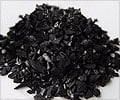Multiple sclerosis (MS) is a chronic inflammatory disorder that causes degeneration of the nerves in the brain and spinal cord.
Multiple sclerosis (MS) is a chronic inflammatory disorder that causes degeneration of the nerves in the brain and spinal cord, leading to various symptoms including muscle weakness and pain.
Most individuals with MS go through cycles of disease and remission, leading to the suggestion that there are regulatory mechanisms that counter the disease-causing inflammation. Using a mouse model of MS (known as EAE), researchers from the Gulbenkian Institute in Portugal show that increased expression of a protein known as HO-1, as well as administration of carbon monoxide, protect mice from disease.In the study Miguel Soares and colleagues show that mice lacking HO-1 develop more severe EAE than wild-type mice. Conversely, in mice already suffering the symptoms of EAE, disease is reversed if HO-1 expression is induced. The function of HO-1 is to degrade excess heme (a component of many important cellular proteins) and one of the by-products of heme degradation is carbon monoxoide. Surprisingly, like the induction of HO-1 expression, administration of carbon monoxide to mice already suffering the symptoms of EAE decreased disease. The authors therefore suggest that modulating HO-1 expression or administering carbon monoxide might be useful therapeutic strategies to treat patients with MS.
Source-Eurekalert
SRM







